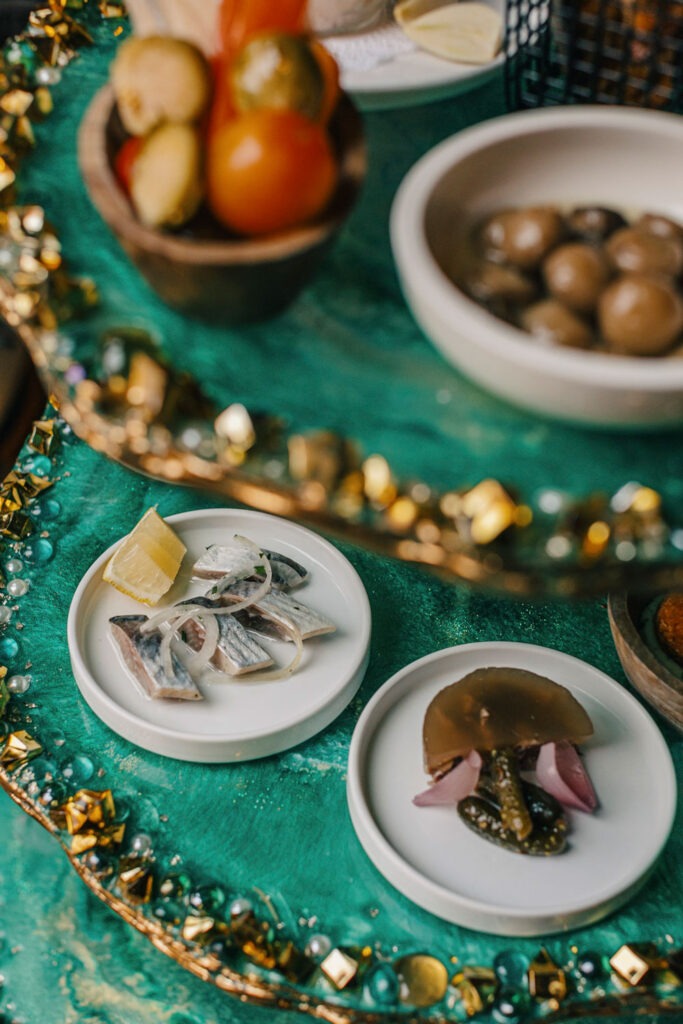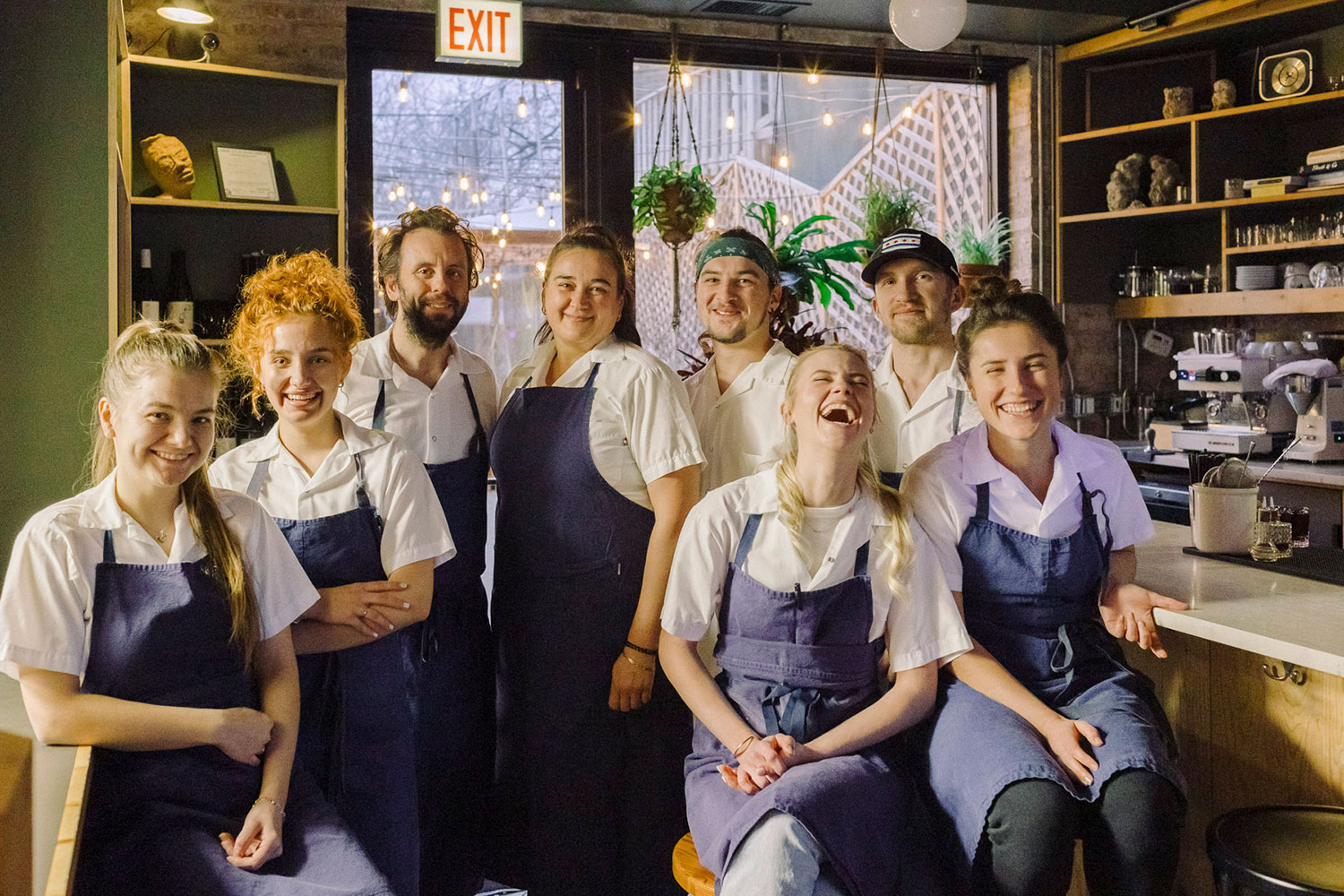
When I started preparing this month’s review of Anelya, I saw that I needed to do some research in order to address its cooking with any authority. What is Ukrainian food and how does it differ from Russian food? I didn’t know.
Also, it felt kind of weird not to have any idea because, like many American Jews, I have a complicated relationship with that country. My grandparents on my dad’s side both emigrated from what is now Ukraine — my grandmother from Odesa and my grandfather from Berdychiv. Like most Jews from the region, they were Russian-speaking subjects of the Russian Empire, so I grew up knowing them as Russians.
So when we decided to take our kids on a kinda-sorta heritage tour we went not to Ukraine but to Moscow and St. Petersburg. There, the Georgian and Armenian restaurants had the most interesting and best tasting food. (Southern climes always win.) The traditional Russian ones, though, were homey and generous. They were often decorated like country dachas and they greeted guests with a nice assortment of zakusky (pickles, cured meat and fish, small savory pastries) as well as a ceramic jug of the house specialty infused vodka to get the meal started with a warming shot. (I’ll never forget when one of my kids demurred, saying she was only 15, and the server responded, “No problem! Is Russia!”)
This is all a long way of saying that when I started preparing to write the Anelya review, I had a fairly good notion of Russian food — so my work was to understand how much it overlaps with Ukrainian.
My conclusion? Quite a lot.
Chicago has a small number of Ukrainian restaurants, many of which — Tryzub Ukrainian Kitchen, Old Lviv — are just where you would expect them, in Ukrainian Village. Yet after asking around, I kept hearing that the best Ukrainian restaurant is Magic Jug in Portage Park. I can’t tell you if that’s true or not, but after one visit I will say it’s a sweet place with large, inexpensive portions of Eastern European comfort food. Golubtsi (cabbage rolls stuffed with ground meat and rice) come two to the order, as fat as éclairs and tender enough to cut with a fork. Borsch served with a big dollop of smetana sour cream had a lively flavor and reminded me of the best versions I tried in Russia.
A dish that is distinctly Ukrainian, served here and at Anelya, is called banosh. It’s a thick cornmeal porridge eaten by the Hutsul ethnic minority in the Carpathian Mountains. Imagine fine-meal polenta cooked with cream and smetana instead of water and further enriched with feta cheese sprinkled on top. I prefer the version here to the one at Anelya for its gorgeous texture (like a savory pot de crème) and the way its flavor balances the corn sweetness and the cultured cream tang. The next day I ate the microwaved leftovers with a spoon, a rich indulgence.

The banosh aside, I was still hard pressed to find much on the menu that felt specifically Ukrainian. It wasn’t until I interviewed Johnny Clark, Anelya’s chef, that I began to get some sense of native Ukrainian culture and how it expresses itself in cuisine.
“If you go to any traditional, older Ukrainian homes,” Clark says, “you’ll see a pich oven that’s used to both heat homes and cook food.” These ovens, which are often fronted with elaborate painted tiles, stay on at night; as the embers slowly die, various foraged foods can be smoked or dried. “If you look at some really old recipes, they would describe gathering wild pears and leaving them in the pich overnight,” Clark says. During a research trip, he visited Poltava, a city between Kiev and Kharkiv, where borsch would often be made with a game bird stock, such as pigeon, so Clark created a distinctive version made with duck stock and sweetened with smoked pear.
Other items on his menu that Clark names as typically and specifically Ukrainian are the egg mayo he serves with his zakusky course as well as the kholodets, a jellied meat aspic that is something between head cheese and a congealed salad. His grandmother, who lived through the 1932 Holodomor famine, remembers it as a special treat.
Finally, Clark made an effort to bring in Ukraine’s favorite spirit, horilka, distilled from wheat or rye. To that, I offer him a toast.
Here and there
I checked out Primetime Bar & Grill in Albany Park for its smashburgers after reading positive reports on the Chicago Food Reddit. The Spicy with fried jalapeños, diced raw jalapeños, habanero mayo, and pepper jack cheese had maybe one hot condiment too many for me, but the burger was crispy and appealing. Nice folks running the place.
Xi’an Cuisine, a longstanding restaurant in Chinatown that is one of the very few in the city to serve the distinctive cooking of Shaanxi Province, has opened a location in the West Loop hard by the highway, and judging by the boisterous lunch crowd, it’s catching on. I really liked the Biang Biang Noodles, and can’t wait to go back and try more of the menu.
I tried and failed for the third time to get one of those Wagyu hot dogs at Fixin Franks inside Home Depot but no luck. I texted with the owners and found out the fancy tube steaks are on hiatus until “spring/summer.” The regular ones are just fine, though hot dog cognoscenti will tell you they’re skinless and therefore inferior. I’m not getting into it.



